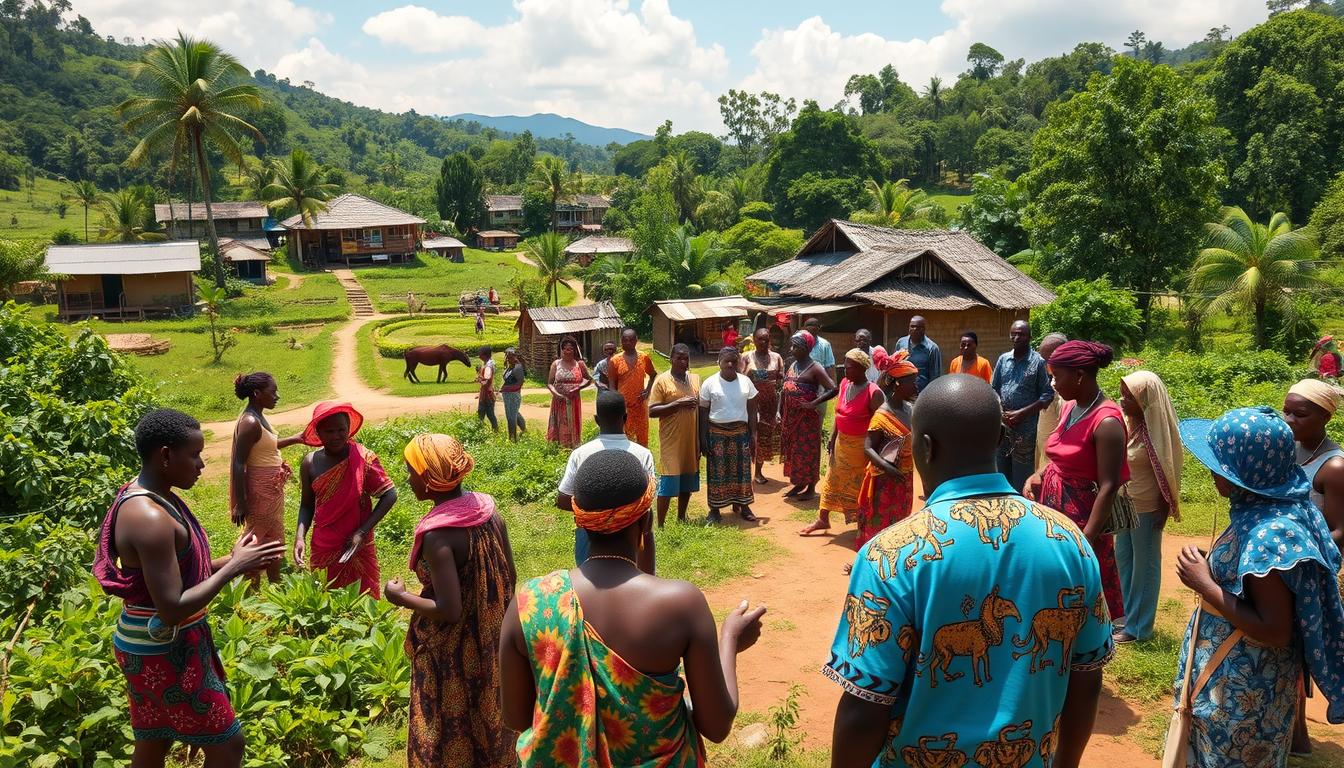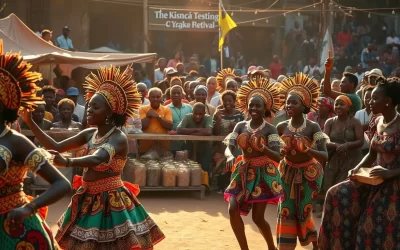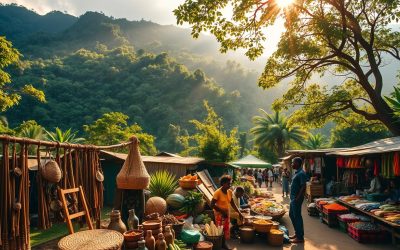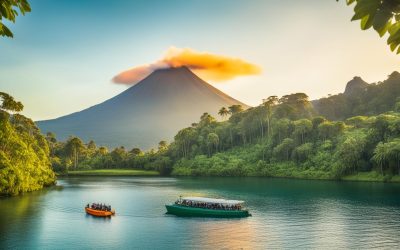Have you ever wondered how a single country can communicate with 242 different languages? The Democratic Republic of Congo is a linguistic marvel. It challenges our understanding of communication and cultural diversity.
Congo has a unique linguistic landscape. French is the official language, but there are many indigenous tongues. By 2024, over 55 million people will speak French, making up nearly 51% of the 109 million population.
The linguistic complexity of Congo is more than just communication. It shows the nation’s rich cultural heritage. Language is a bridge and a reflection of historical experiences. French is used by 74% of the population for daily interactions.
In urban centers like Kinshasa, the language dynamics are fascinating. Here, 67% of residents can read and write in French. Also, 68.5% can speak and understand it fluently. This shows how deeply French is woven into Congo’s social fabric.
Key Takeaways
- Congo boasts 242 spoken languages, making it one of the most linguistically diverse nations globally
- French is the official language, spoken by over 55 million people
- 74% of Congolese use French as a communication tool
- Kinshasa has high French literacy rates, with 67% reading and writing proficiency
- The linguistic landscape reflects complex cultural and historical interactions
Understanding the Linguistic Diversity of Congo
The Democratic Republic of Congo is a treasure trove of languages. It has about 242 known languages. This makes it one of the most linguistically diverse places in the world.
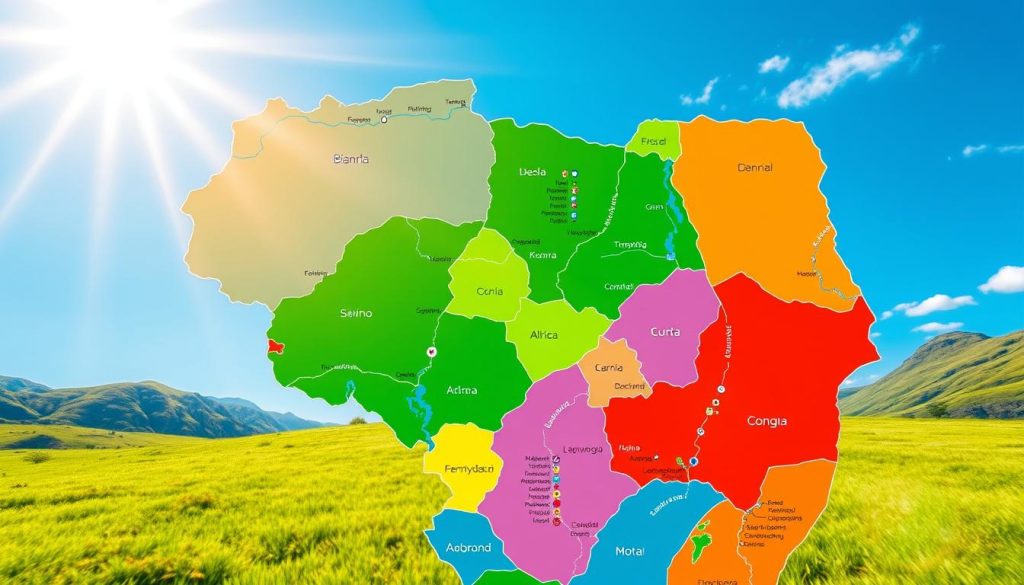
Exploring Congo’s languages is fascinating. Out of 242 languages, 62 are used in different areas. This creates a lively communication system.
Language Families and Distribution
The languages of Congo are mainly from the Bantu family. Several key languages play important roles:
- Lingala: Widely spoken in eastern and northern regions
- Swahili: Prevalent in eastern Congo
- Kituba: Dominant in southwestern regions
- Tshiluba: Primarily used in southeastern areas
Historical Language Development
Congo’s language history is amazing. During the Belgian colonial era, Congo was unique. It promoted literacy in local languages, unlike other African colonies.
The linguistic diversity of Congo is not just a collection of words, but a living narrative of its people’s history and resilience.
Current Language Distribution
| Language | Speakers | Primary Regions |
|---|---|---|
| Lingala | Approximately 50% of population | Northwest, Kinshasa |
| Kituba | 50% of population | Southwest |
| Swahili | Significant in urban areas | Eastern regions |
| Tshiluba | Regional importance | Southeast |
French is the official language, but only 30% speak it well. The real power lies in the national languages. They connect communities across this vast and diverse nation.
French as the Official Language of Congo
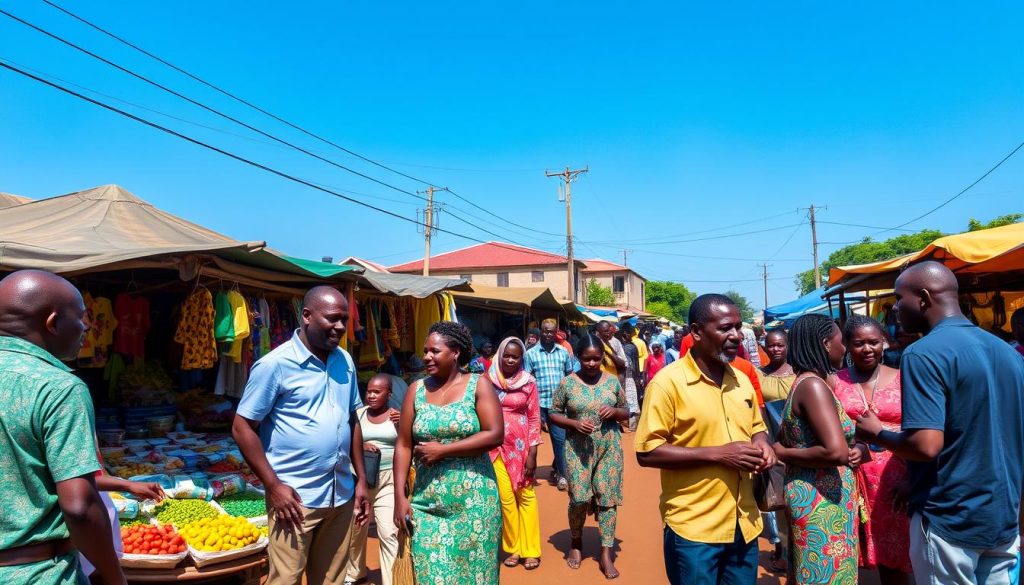
In Congo, French is a key language that brings people together. It was introduced in 1885 during Belgian rule. Now, it’s the official language of the country.
French is very common in Congo. Over 55 million people (50.69% of the population) speak it. In Kinshasa, the capital, 68% of residents speak French well.
“French acts as a linguistic bridge, connecting various ethnic groups across the Democratic Republic of Congo.”
Key aspects of French in Congo include:
- Official status since independence in the 1950s
- Primary language of government and administration
- Lingua franca used by 74% of the population
- Essential for education and professional opportunities
French is more than just a language. It’s important for:
- International diplomatic relations
- Media and communication
- Higher education systems
- Business and economic interactions
Congo is the second most French-speaking country globally. This shows how important French is in Congo’s culture.
| French Language Statistic | Percentage |
|---|---|
| Total Population Speaking French | 50.69% |
| Native French Speakers | 12% |
| French Usage in Kinshasa | 68% |
| Population Using French as Communication Language | 74% |
The Roman Catholic Church and Belgian colonial administration helped make French popular. They started schools and made French a part of everyday life.
The Four National Languages of Congo
The Democratic Republic of Congo has a rich linguistic landscape. It shows the country’s cultural diversity. Over 242 languages are spoken, with four standing out as key for communication.
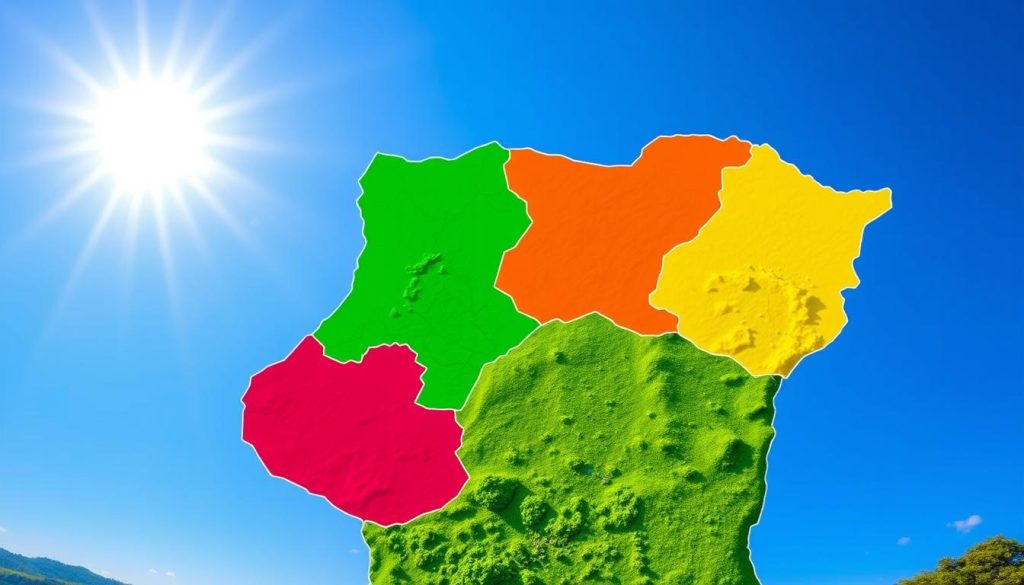
These languages show the complex fabric of Congo’s language. Lingala, Kikongo, Swahili, and Tshiluba each have their own role in different areas.
Historical Implementation of National Languages
During the Belgian colonial era, Congo made a bold move. It chose to promote indigenous languages. This move helped in language education and keeping culture alive.
- Lingala became prominent in the northwest regions
- Swahili dominated the eastern provinces
- Kikongo (Kituba) emerged as a lingua franca in western urban centers
- Tshiluba gained significance in southeastern territories
Current Status and Usage
Today, these languages shape communication in Congo. Kituba is especially important in cities like Kikwit, Bandundu, and Matadi. It acts as a key language for many.
Geographic Distribution
The spread of these languages shows Congo’s cultural complexity. French is the official language, but these national languages show the true identity of Congolese people.
“Language is the road map of a culture. It tells you where its people come from and where they are going.” – Rita Mae Brown
Exploring Kinshasa’s streets or traveling through Kilendu shows Congo’s rich heritage. You’ll see a vibrant mix of languages that tell the country’s story.
Lingala: The Language of Commerce and Military
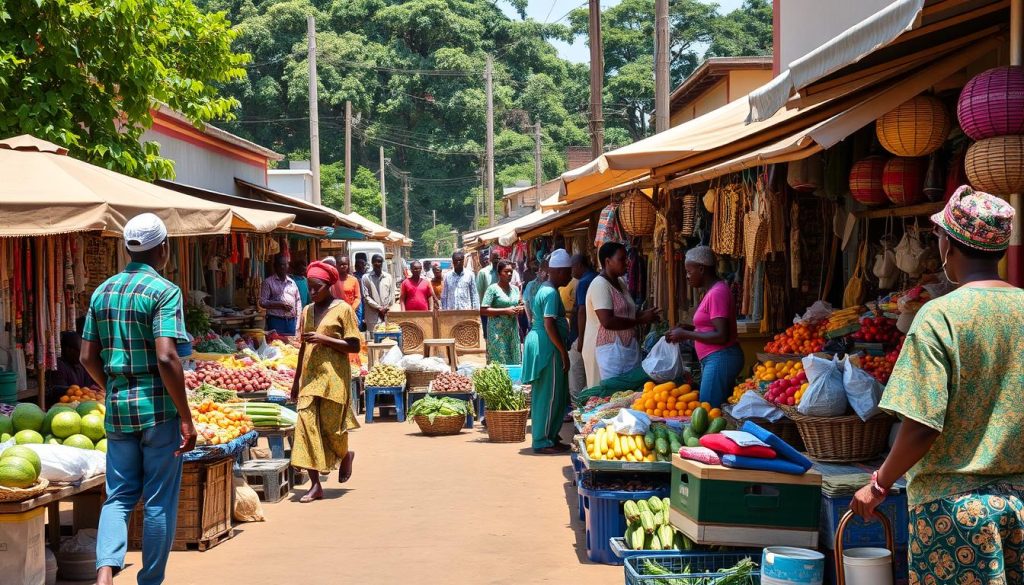
Lingala is a strong language in Congo, connecting people and shaping culture. It started by the Congo River and grew into a key way for millions to express themselves.
Over 10 million people speak Lingala, mainly in the Democratic Republic of the Congo and the Republic of Congo. It’s not just for talking; it’s vital for military and city life.
- Evolved from Bobangi in the late 19th century
- Primary language in Kinshasa and Brazzaville
- Central to Congolese military communication
- Dominant in popular music genres like soukous
Under President Mobutu, Lingala became official in the military. It became a symbol of city pride and culture.
“Lingala is not just a language; it’s the heartbeat of Congolese urban culture.”
Lingala is also big in radio, TV, and music. It’s a lively language that brings together different Congolese groups.
Knowing about Lingala helps you understand Congo’s language world. It shows how a local dialect became a key language across the country.
Swahili and Its Influence in Eastern Congo
Swahili is key in eastern Congo, linking it to East Africa. It has about 5.3 million first speakers and over 92 million second speakers. This makes Swahili a strong network across many countries.
In the Democratic Republic of Congo, a special version called Kingwana is common. It’s different from Standard Swahili, showing the area’s rich culture.
Congo Swahili: A Distinctive Dialect
Congo Swahili, especially Kingwana, is unique. It has been shaped by local languages like Kongo and Kilendu. This makes it stand out.
- Kingwana is most common in Katanga, a rich mineral area
- Local languages affect its words and how it’s spoken
- Talking to Standard Swahili speakers can be hard
Regional Variations and Usage
Swahili in eastern Congo does more than just talk. It’s important in:
- Schools
- Media
- Business
- Government talks
“Swahili bridges communities, transcending traditional linguistic boundaries in eastern Congo.”
| Swahili Characteristic | Congo Swahili (Kingwana) Feature |
|---|---|
| Origin | Bantu language with Arabic influences |
| Primary Region | Eastern Congo, especially Katanga |
| Vocabulary Composition | Blend of Swahili, Kongo, and Kilendu words |
Learning about Congo Swahili shows how language changes. It shows how talking evolves through culture and history.
Kikongo (Kituba): The Bridge Language
Kikongo, or Kituba, is a special language that connects many communities in western Congo. It comes from the Kongo language family. It helps millions of people talk to each other.
Kituba is very important in Congo. It’s called Kikongo ya Leta (Government Kikongo). It’s used in government and everyday life. Learning about Kituba shows how it adapts and is valued by many.
Key Characteristics of Kikongo (Kituba)
- Simplified grammatical structure compared to traditional Kikongo
- Recognized as an official language in multiple provinces
- Serves as a primary lingua franca in urban and rural areas
The language’s growth shows how Congo’s culture is always changing. Kituba mixes words from different languages. This makes it easy for people from different groups to talk to each other.
“Kituba bridges linguistic gaps, connecting communities through shared understanding.”
Geographic and Demographic Insights
| Region | Speakers | Primary Use |
|---|---|---|
| Bas-Congo Province | Estimated 2.5 million | Administrative communication |
| Kinshasa | Approximately 3 million | Daily commerce and interaction |
| Republic of Congo | Around 1.9 million | Local media and education |
Kikongo (Kituba) has about 7 million speakers. It’s key in keeping cultural identity alive. It also helps people from different languages talk to each other.
Tshiluba and Its Regional Variants
In Congo, Tshiluba is a language full of regional diversity. It shows a rich tapestry of cultures and histories.
Tshiluba is one of Congo’s four national languages. It has a deep history in the Kasai regions. About 6.4 million people speak it, making it key in central Congo.
Luba-Kasai and Luba-Lulua: Linguistic Cousins
There are two main types of Tshiluba:
- Luba-Kasai: Spoken in East Kasai Region
- Luba-Lulua: Used in West Kasai Region
Though different, these dialects are mostly understandable to each other. They show the unique cultures of the Luba people.
Administrative Language Dynamics
In official settings, Luba-Kasai is usually used. The law is unclear on which version is the official language. Yet, Luba-Kasai is the main language in government.
“Language is the road map of a culture. It tells you where its people come from and where they are going.” – Rita Mae Brown
Interestingly, Tshiluba has also adapted to city life. It has a Pidgin Chiluba form. This mix includes French and local words.
Congo: Official and widely spoken languages
In Congo, you’ll see a rich mix of languages that show the country’s deep culture. French is the official language, left over from colonial times. It shapes how the country talks and works together.
The Democratic Republic of the Congo is home to a staggering 242 languages. This shows the country’s complex cultural mix.
- French serves as the primary official language
- Four national languages dominate communication
- Urban centers show increased French fluency
About 30% of Congolese speak French well, especially in cities like Brazzaville. French is key for talking between different ethnic groups. It’s used in government, schools, and work.
“Language is the roadmap of a culture. It tells you where its people come from and where they are going.” – Rita Mae Brown
But Congo isn’t just about French. Local languages like Lingala, Kikongo, Swahili, and Tshiluba are also important. They show the country’s cultural and linguistic depth.
Congolese people are great at using many languages. They switch based on who they’re talking to and where they are.
The Role of Foreign Languages in Modern Congo
Foreign languages are changing how people communicate in Congo. Lingala and Swahili are still key, but English and Portuguese are becoming more important. They help with international talks and learning.
English is now a big deal in government. Ministers often speak English in meetings, showing Congo’s link to the world. Joseph Kabila’s education in Tanzania also points to this shift. English is key for talking business and diplomacy, especially with East Africa and the world.
English Usage in International Relations
Knowing about Congo’s languages is important. English is becoming a key tool for talking to the world. It’s used in schools too, opening doors to global knowledge and jobs.
Portuguese Influence
Portuguese is also making a mark in Congo. In 2010, the government made it an optional school language. This move is thanks to Brazil’s growing influence and more people from Angola and Mozambique. Kikongo speakers are finding new chances through Portuguese, showing Congo’s openness to different languages.
The above is subject to change.
Check back often to TRAVEL.COM for the latest travel tips and deals.
Here are some Tours & Sightseeing suggestions that might pique your interests!
